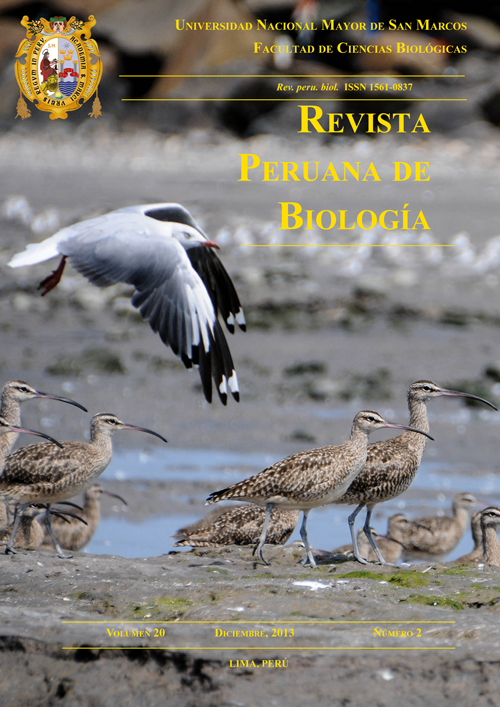Biochemical study of Tityus kaderkai (Scorpiones: Buthidae) venom with notes on its distribution and habitat in Peru
DOI:
https://doi.org/10.15381/rpb.v20i2.2679Keywords:
venom, scorpion, toxin, enzyme, Tityus kaderkaiAbstract
The biochemistry of the venom of Tityus kaderkai Kovařik, 2005 from Madre de Dios department, has been studied. The soluble venom contains 47.6% of protein. The venom proteins were separated from 12.9 mg of venom using cationic exchange chromatography in CM Sephadex C-25 with a 0.05 M ammonium acetate buffer pH 7.0. The chromatography profiles show seven peaks of proteins (I – VII) and five protein bands were distinguished in the crude venom, by PAGE-SDS. The toxicity assays allowed the identification of three toxins affecting Mus musculuswhich were associated to peaks IV, V and VII. Toxic proteins to Gryllus sp. were also found associated to peaks IV, V, VI and VII. Through the enzymatic activity, the presence of proteolytic activity over casein was found related to the first peak. Hyaluronidase activity has also been found in the peak IV with a specific activity 205.6 μg/min/mg. However, the crude venom and collected fractions did not show any phospholipase, anticoagulant, nor hemolytic activity. Notes on the distribution pattern and habitat are also included.Downloads
Downloads
Published
Issue
Section
License
Copyright (c) 2013 Enrique Escobar, Rosalina Tincopa, José A. Ochoa

This work is licensed under a Creative Commons Attribution-NonCommercial-ShareAlike 4.0 International License.
AUTHORS RETAIN THEIR RIGHTS:
a. Authors retain their trade mark rights and patent, and also on any process or procedure described in the article.
b. Authors retain their right to share, copy, distribute, perform and publicly communicate their article (eg, to place their article in an institutional repository or publish it in a book), with an acknowledgment of its initial publication in the Revista Peruana de Biologia.
c. Authors retain theirs right to make a subsequent publication of their work, to use the article or any part thereof (eg a compilation of his papers, lecture notes, thesis, or a book), always indicating its initial publication in the Revista Peruana de Biologia (the originator of the work, journal, volume, number and date).






